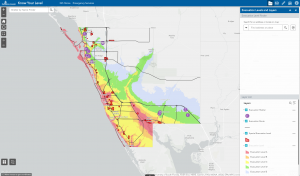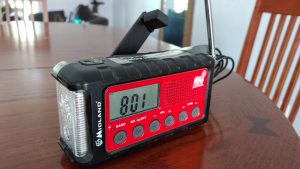While we’re in the grip of the COVID-19 pandemic, few of us want to spend much time—if any—thinking about the hurricane season. But, June 1 marks the official start of that six-month season, and now is the time to prepare.
Disaster planning takes time. Getting organized now not only can help with your long-term safety but could go a long way to easing your mental health with some much-needed peace of mind. So, where do you start?
In our “Storm Season 2020” blog series, we are going to approach disaster preparedness in steps, devoting a blog post to each of the following:
- Gathering information (Are you ready?)
- Creating a plan
- Assembling your kit and supplies
- Evacuation shelters
- Post-disaster precautions
- Food safety
Today, we start with “Gathering information,” and we’ll follow up in the coming days with other posts. We’re compiling information from a number of great resources, including the Sarasota County Government website: scgov.net. There, you will find a range of disaster information, from preparation to the latest conditions, all pertaining to our area.
One of the first things you’ll want to know in preparing for a storm is whether your home is in a hurricane evacuation zone or a Federal Emergency Management Agency (FEMA) flood zone. These are different, so learning your zone could greatly impact your safety.

As Floridians, we well know the risk that hurricane-force winds bring, as well as the tornadoes they sometimes spawn. But, an often underestimated threat is the flooding that often accompanies these storms, whether from torrential rains, storm surge or both. So, knowing your flood zone is important.
Like its interactive evacuation level map, the County has developed an interactive flood zone map, which operates in the same way (type in a county address to get information).
Keep in mind, though, we don’t need a weather event to experience flooding in our homes. A flood can occur in myriad ways, from a broken laundry hose to an undetected plumbing leak. Flood insurance can help you recover, but it can only be purchased in Florida from Dec. 1 to May 31 (outside hurricane season). And, there is a 30-day waiting period before flood insurance coverage goes into effect. Whenever you purchase coverage, make certain your home is insured for its reconstruction cost, not its real estate value!
Next, as part of your information-gathering process, you may need to apply for registration as a medically-dependent person (MDP). It is important to apply early for this program to be certain you qualify. Examples of qualifying could include the need for supplied oxygen, feeding tubes, and use of equipment that require electricity. For qualifying individuals, transportation to a medical-dependent shelter will be provided. For more information, visit the County’s medical needs program page or call 941-861-5000.

Developing a plan takes time and it is an important step in disaster preparedness. Once you have developed a plan, remember to communicate your plan with family members that live in another neighborhood or state. Make sure the contact information you have is up to date. You might consider keeping these numbers not only in your cell phone but also in a small, address book, to make contact in a variety of ways. Remember, too, that sending text messages is usually more reliable and faster than making phone calls, simply because lines can become overloaded.
As you can see from just this post, preparing for a disaster can be a time-consuming process, with multiple steps and milestones along the way. A checklist can go a long way to keeping you organized and on track. So, here you go:
- Gather information to create a plan for you and your family
- Learn about community response plans and evacuation plans
- Learn the risks in your area
- Know your flood zone
- Sign up for ALERT Sarasota County to get current information
- Apply now for registration as a medically-dependent person (MDP)
- Purchase a weather radio
We’ll have more information on storm preparation in our next post, “Creating a plan.” In the meantime, learn more at the County’s hurricane preparedness web pages, starting at www.scgov.net/government/emergency-services/hurricane-preparedness.
And, don’t forget our suite of “Disaster Preparedness” classes. These free, 60-minute webinars, scheduled for a variety of days and times through June and July, provide you the information and skills needed to get ready before any storm rolls in. Find a webinar that best fits your busy lifestyle by visiting tiny.cc/ufsaraext_stormprep.
 0
0
